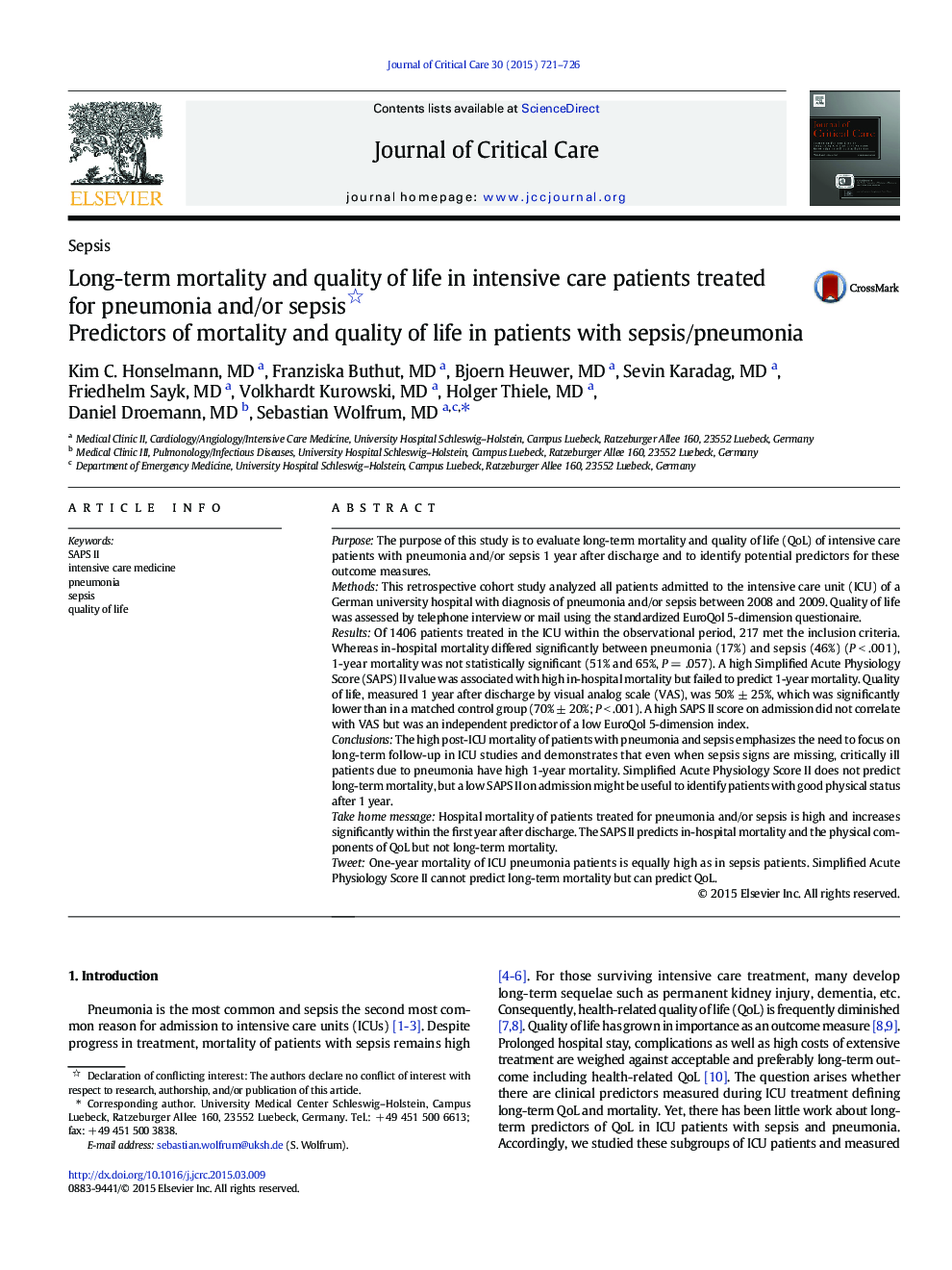| کد مقاله | کد نشریه | سال انتشار | مقاله انگلیسی | نسخه تمام متن |
|---|---|---|---|---|
| 2764522 | 1150922 | 2015 | 6 صفحه PDF | دانلود رایگان |
PurposeThe purpose of this study is to evaluate long-term mortality and quality of life (QoL) of intensive care patients with pneumonia and/or sepsis 1 year after discharge and to identify potential predictors for these outcome measures.MethodsThis retrospective cohort study analyzed all patients admitted to the intensive care unit (ICU) of a German university hospital with diagnosis of pneumonia and/or sepsis between 2008 and 2009. Quality of life was assessed by telephone interview or mail using the standardized EuroQol 5-dimension questionaire.ResultsOf 1406 patients treated in the ICU within the observational period, 217 met the inclusion criteria. Whereas in-hospital mortality differed significantly between pneumonia (17%) and sepsis (46%) (P < .001), 1-year mortality was not statistically significant (51% and 65%, P = .057). A high Simplified Acute Physiology Score (SAPS) II value was associated with high in-hospital mortality but failed to predict 1-year mortality. Quality of life, measured 1 year after discharge by visual analog scale (VAS), was 50% ± 25%, which was significantly lower than in a matched control group (70% ± 20%; P < .001). A high SAPS II score on admission did not correlate with VAS but was an independent predictor of a low EuroQol 5-dimension index.ConclusionsThe high post-ICU mortality of patients with pneumonia and sepsis emphasizes the need to focus on long-term follow-up in ICU studies and demonstrates that even when sepsis signs are missing, critically ill patients due to pneumonia have high 1-year mortality. Simplified Acute Physiology Score II does not predict long-term mortality, but a low SAPS II on admission might be useful to identify patients with good physical status after 1 year.Take home messageHospital mortality of patients treated for pneumonia and/or sepsis is high and increases significantly within the first year after discharge. The SAPS II predicts in-hospital mortality and the physical components of QoL but not long-term mortality.TweetOne-year mortality of ICU pneumonia patients is equally high as in sepsis patients. Simplified Acute Physiology Score II cannot predict long-term mortality but can predict QoL.
Journal: Journal of Critical Care - Volume 30, Issue 4, August 2015, Pages 721–726
